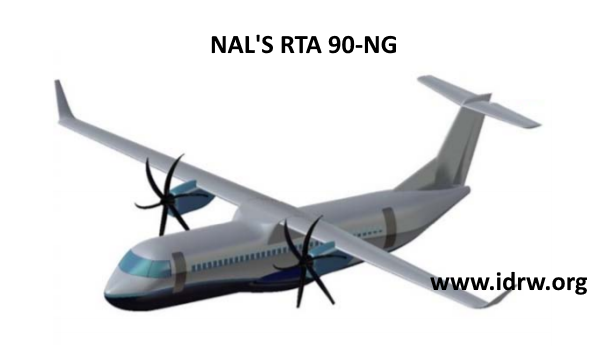SOURCE: RAUNAK KUNDE / NEWS BEAT / IDRW.ORG

In a bid to meet the burgeoning demand for air travel in India, the Ministry of Civil Aviation (MoCA) and the Ministry of Defence (MoD) are set to engage in discussions with major carriers, including Air India and IndiGo, to explore the potential development of a Regional Transport Aircraft (RTA). The proposed RTA, a 90-seat turboprop aircraft, aims to address the increasing demands in the country’s aviation sector over the next two decades. The project, assigned to the National Aerospace Laboratories under the Council of Scientific and Industrial Research, holds significant promise but faces challenges that require strategic collaboration and financial backing.
With expectations that the South Asian region will witness the addition of more than 2,400 aircraft over the next 20 years, India is actively considering the development of a 90-seat turboprop RTA. This move aligns with the country’s aspirations to bolster its aviation capabilities and cater to the growing air travel demands within its borders.
Earlier this year, the CSIR-National Aerospace Laboratories estimated that the clean-sheet design and development of the RTA-90 aircraft would require an investment of up to $2 billion. To ensure efficient execution, the project will be carried out under a Special Purpose Vehicle. This strategic approach aims to streamline the development process and enhance collaboration between government agencies, research institutions, and private entities.
While the Indian government has divested its stake in the aviation sector by selling Air India to the Tata Group, it remains a crucial player in steering the trajectory of such ambitious projects. The government has been keen on encouraging Airbus and Boeing to establish final assembly lines in the country. However, the lack of progress in this regard has prompted the government to explore collaborations with major domestic carriers.
Sources suggest that Memorandums of Understanding (MoUs) with private companies could boost confidence in the RTA project. However, tangible progress may be contingent on the government’s financial commitment to the program. Offering tax breaks and other incentives to operators could be pivotal in securing their participation and support for the project.
The complexity of executing a program of this scale, coupled with the absence of prior experience, has raised concerns within the government. Establishing an ecosystem conducive to the development of local regional aircraft is seen as a crucial step. The government’s preference for Boeing and Airbus to set up final assembly plants in India before initiating the RTA project underscores the need for a comprehensive ecosystem.
The discussions between the MoCA, MoD, and Indian carriers are expected to provide valuable insights into the potential demand for the RTA-90 aircraft and the challenges associated with its development. The government’s decision on whether to proceed with the RTA program will likely hinge on the outcome of these discussions and the availability of funding.
NOTE : Article cannot be reproduced without written permission of idrw.org in any form even for YouTube Videos to avoid Copy right strikes. Websites doing illegal reproductions will get DCMA and Legal Notices.